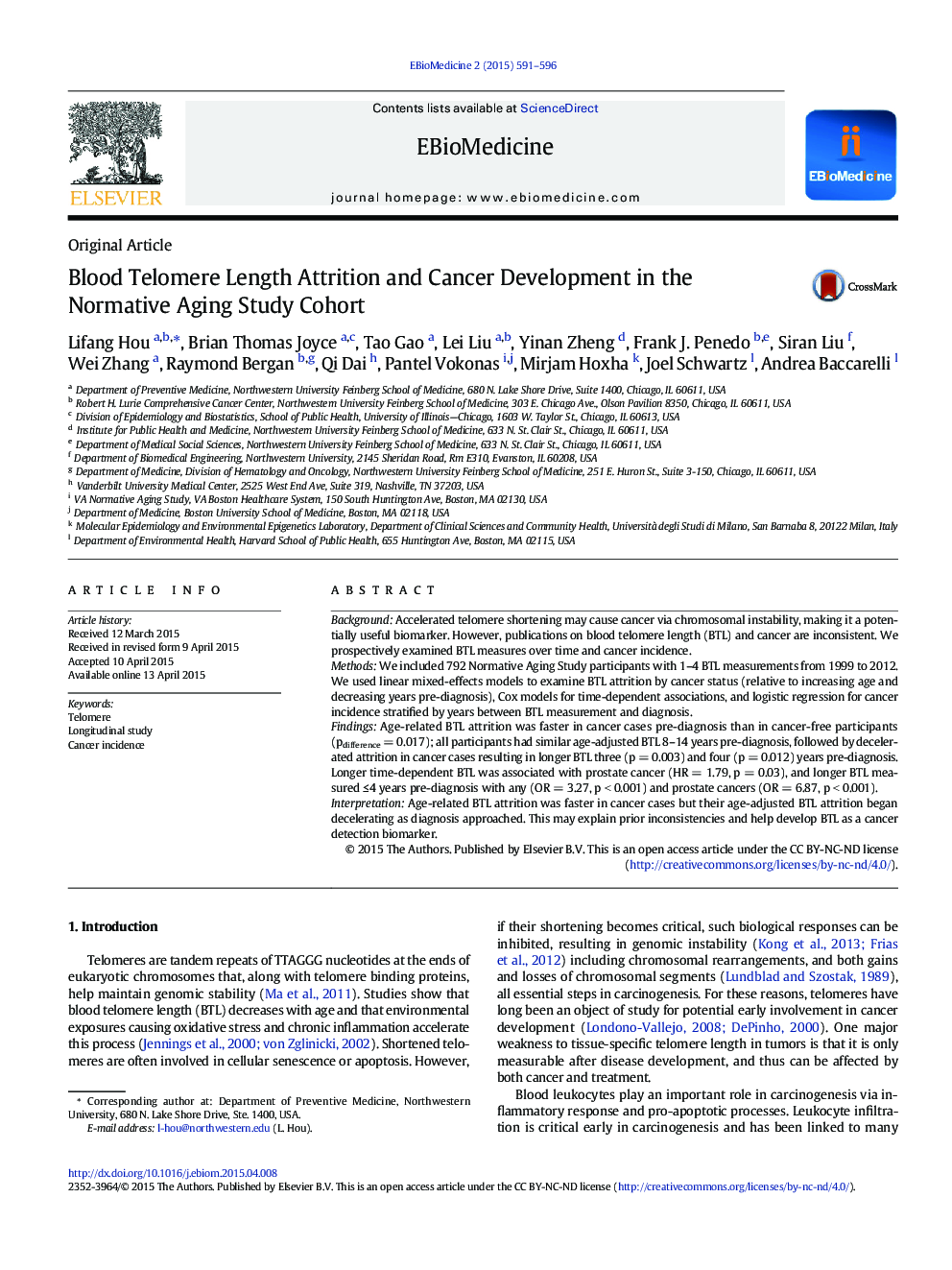| Article ID | Journal | Published Year | Pages | File Type |
|---|---|---|---|---|
| 2121041 | EBioMedicine | 2015 | 6 Pages |
•Normal, age-related telomere attrition is faster in subjects who later developed cancer.•Telomere attrition began decelerating before cancer diagnosis, resulting in longer telomeres 3–4 years pre-diagnosis.•Longer telomeres measured within four years of diagnosis were associated with all-cancer incidence.
BackgroundAccelerated telomere shortening may cause cancer via chromosomal instability, making it a potentially useful biomarker. However, publications on blood telomere length (BTL) and cancer are inconsistent. We prospectively examined BTL measures over time and cancer incidence.MethodsWe included 792 Normative Aging Study participants with 1–4 BTL measurements from 1999 to 2012. We used linear mixed-effects models to examine BTL attrition by cancer status (relative to increasing age and decreasing years pre-diagnosis), Cox models for time-dependent associations, and logistic regression for cancer incidence stratified by years between BTL measurement and diagnosis.FindingsAge-related BTL attrition was faster in cancer cases pre-diagnosis than in cancer-free participants (pdifference = 0.017); all participants had similar age-adjusted BTL 8–14 years pre-diagnosis, followed by decelerated attrition in cancer cases resulting in longer BTL three (p = 0.003) and four (p = 0.012) years pre-diagnosis. Longer time-dependent BTL was associated with prostate cancer (HR = 1.79, p = 0.03), and longer BTL measured ≤ 4 years pre-diagnosis with any (OR = 3.27, p < 0.001) and prostate cancers (OR = 6.87, p < 0.001).InterpretationAge-related BTL attrition was faster in cancer cases but their age-adjusted BTL attrition began decelerating as diagnosis approached. This may explain prior inconsistencies and help develop BTL as a cancer detection biomarker.
